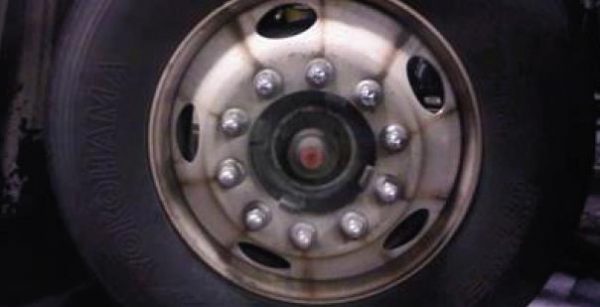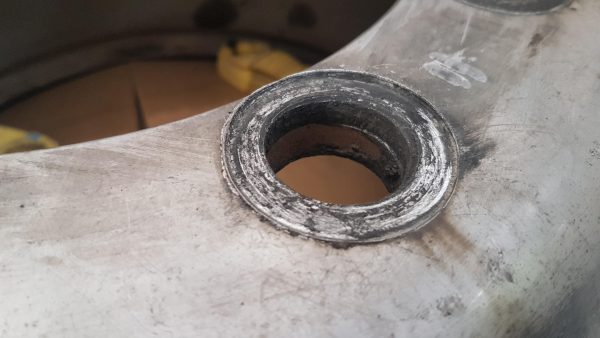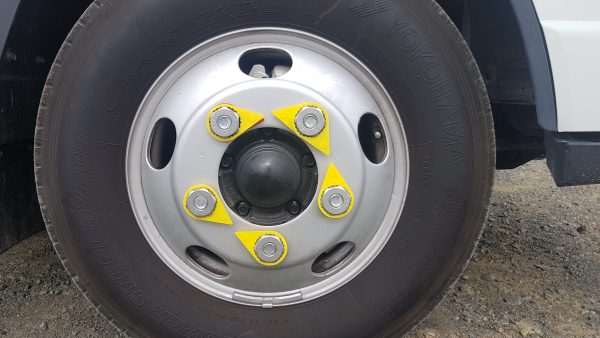If a lorry’s wheel comes off while travelling on the motorway, it’s an 85kg weight that can smash its way into an oncoming car, killing the occupant, as happened on the M6 in Cheshire. The HGV driver was sent to prison for 12 months for not maintaining his vehicle.
Wheel nuts come loose due to the vibration and strain put through them by the heavy loads that lorries carry; it rarely happens with car wheels. When an HGV driver has had a wheel replaced, it’s important that the wheel nuts are retorqued after around 100 miles.
The problem for the driver, when doing their pre-trip inspection, is that it is almost impossible to tell if a wheel nut has come loose. In some circumstances, grey or rust-coloured lines may be visible from the nuts radiating out towards the edge of the rims, but not in all cases, and this means that the nut has been loose a while; if you can turn the nut with your fingers, it’s dangerously loose and about to come off.

Wheel nuts can also come loose if a wheel has been painted and the paint is not good quality. The action of the nut on the paint cracks the paint. The paint washes out from behind the nut, leaving the nut loose against the wheel rim. Vibration gradually loosens the nut further. If enough nuts come loose, the wheel will shear the rest of them off and end up bouncing down the road.
A similar thing can happen if the wheel wasn’t clean when the nuts were applied, or if the nuts are loosened through the wheel flexing, or expanding and contracting as it heats up and cools down.
It’s difficult for the driver to feel the nuts coming loose and the wheel beginning to vibrate unless it’s on a steering axle; a driver may not feel a wheel come off a semitrailer.
You also cannot see damage on the rim unless you take the nuts off.

How do wheel indicators help prevent wheel-off incidents?
Wheel nut indicators take two basic forms:


The plastic indicators can also show if your wheel hub is overheating because they will discolour and warp at around 120 degrees Celsius; this means you should check your bearings.
Wheel nut indicators can be in red, green, orange or yellow. Typically, green, orange and yellow are used for indicating the nut’s movement while red is used on one nut to indicate that the wheel has been replaced and the nuts have not yet been retorqued.
These indicators are good for everything from trailers to buses to dump trucks. When purchasing wheel nut indicators, make sure you pick the right size.
